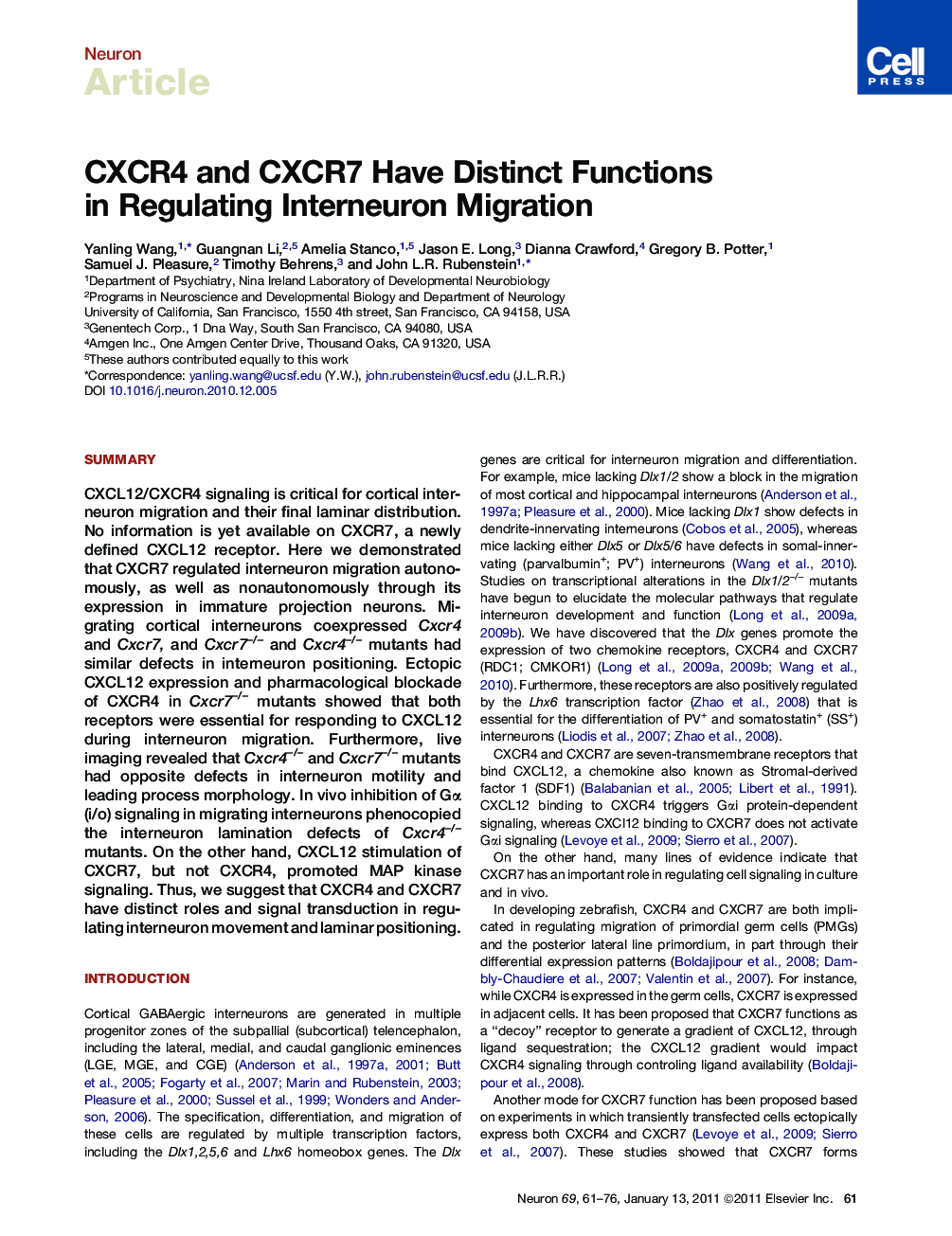| Article ID | Journal | Published Year | Pages | File Type |
|---|---|---|---|---|
| 4322290 | Neuron | 2011 | 16 Pages |
SummaryCXCL12/CXCR4 signaling is critical for cortical interneuron migration and their final laminar distribution. No information is yet available on CXCR7, a newly defined CXCL12 receptor. Here we demonstrated that CXCR7 regulated interneuron migration autonomously, as well as nonautonomously through its expression in immature projection neurons. Migrating cortical interneurons coexpressed Cxcr4 and Cxcr7, and Cxcr7–/– and Cxcr4–/– mutants had similar defects in interneuron positioning. Ectopic CXCL12 expression and pharmacological blockade of CXCR4 in Cxcr7–/– mutants showed that both receptors were essential for responding to CXCL12 during interneuron migration. Furthermore, live imaging revealed that Cxcr4–/– and Cxcr7–/– mutants had opposite defects in interneuron motility and leading process morphology. In vivo inhibition of Gα(i/o) signaling in migrating interneurons phenocopied the interneuron lamination defects of Cxcr4–/– mutants. On the other hand, CXCL12 stimulation of CXCR7, but not CXCR4, promoted MAP kinase signaling. Thus, we suggest that CXCR4 and CXCR7 have distinct roles and signal transduction in regulating interneuron movement and laminar positioning.
► Migrating immature cortical interneurons coexpress Cxcr4 and Cxcr7 ► Cxcr4–/– and Cxcr7–/– mutants have opposite defects in interneuron motility ► CXCR4 and CXCR7 are both essential for responding to CXCL12 ► CXCR4 and CXCR7 signal through different pathways in the developing interneurons
